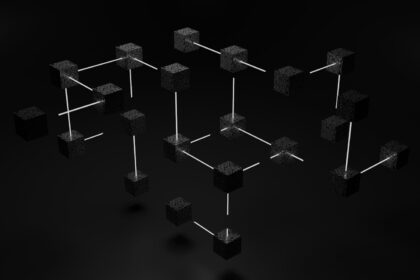To guarantee uninterrupted retrieval of records within decentralized ledgers, it is critical to maintain consistent node participation and robust replication strategies across the network. Storing chunks redundantly on multiple peers reduces the risk of losing segments, enabling users to obtain complete copies without delays or failures.
Implementing erasure coding techniques enhances redundancy while optimizing storage overhead. By splitting the dataset into fragments that can be recombined from a subset, networks minimize required storage capacity yet preserve swift availability for querying historical states or verifying transactions.
Continuous health monitoring protocols help identify underperforming nodes or partial outages early. Prompt redistribution of missing pieces ensures that the collective repository remains intact and accessible, supporting reliable synchronization and auditability at any moment.
In practical terms, this means that participants can fetch needed content efficiently even if some servers temporarily drop out or encounter connectivity issues. Prioritizing resilient infrastructure combined with adaptive data dissemination patterns supports sustained transparency and trustworthiness throughout the system’s lifespan.
Blockchain data availability: ensuring information access
Ensuring continuous presence and accessibility of transactional records within a distributed ledger requires robust mechanisms that prevent data loss or withholding. One effective approach involves the use of redundancy through network nodes, which replicate and store identical copies of ledger segments, facilitating prompt retrieval by any participant. Such replication safeguards against single points of failure and supports synchronization across decentralized participants.
In peer-to-peer systems, the challenge lies in guaranteeing that all required pieces of stored content remain obtainable even during network disruptions or adversarial conditions. Techniques like erasure coding break the original content into multiple fragments, allowing reconstruction from a subset rather than all pieces. This method enhances fault tolerance and reduces storage overhead compared to full replication, while preserving swift recovery capabilities for users requesting ledger snapshots or historical records.
Technical approaches to persistent record maintenance
One widely used strategy to maintain reliable content presence leverages incentive-compatible protocols rewarding nodes that store and serve requested segments promptly. For example, implementations such as Proof-of-Replication require miners to demonstrate possession of unique copies over time. This encourages honest participation in storage duties, increasing overall reliability of the network’s shared repository.
A complementary aspect is efficient querying methods enabling streamlined extraction of relevant entries without exhaustive scanning. Indexing structures combined with lightweight cryptographic proofs allow clients to verify correctness without downloading entire blocks. Systems like this reduce bandwidth consumption and accelerate verification processes, making real-time operations more feasible on resource-constrained devices.
The interplay between storage distribution and retrieval speed often involves trade-offs; excessive fragmentation can complicate assembly while too much duplication burdens node capacity. Optimizing these parameters depends on network size, node heterogeneity, and expected workload patterns. Case studies from projects such as IPFS Filecoin illustrate balancing redundancy with economic incentives to improve resilience against partial outages or targeted censorship attempts.
Ultimately, maintaining uninterrupted availability demands coordinated efforts among protocol design, node governance policies, and user behavior patterns. Continuous monitoring tools track segment propagation status and identify bottlenecks in dissemination pathways. By combining cryptographic guarantees with pragmatic engineering solutions, decentralized ledgers can achieve dependable persistence of transaction histories accessible for validation, auditing, or archival purposes by any authorized party within the ecosystem.
Data availability challenges in blockchain
Ensuring reliable delivery of information across distributed ledgers requires overcoming significant obstacles linked to storage and transmission within the network. Nodes must maintain synchronized copies of critical content, yet limitations in bandwidth and capacity often hinder this process, leading to partial or delayed retrieval. Addressing such hurdles involves optimizing how segments of the ledger are disseminated and stored among participants to guarantee timely verification and consensus.
The complexity grows as the ledger expands, demanding scalable methods for preserving comprehensive records without overwhelming individual nodes. Certain protocols adopt sharding techniques, dividing responsibilities among subsets of validators to reduce load; however, this introduces risks where some data shards may become inaccessible or corrupted, disrupting overall integrity. Continuous monitoring and redundancy mechanisms help mitigate these vulnerabilities by duplicating essential fragments across multiple peers.
Technical aspects affecting data distribution and retention
One common impediment is the reliance on full replication models that impose excessive resource requirements on each participant. For example, Ethereum’s transition toward rollups highlights attempts to offload transactional details off-chain while maintaining verifiable proofs on main layers–this balances storage demands with security but raises questions about node synchronization delays. Similarly, InterPlanetary File System (IPFS) employs content-addressed storage to distribute files efficiently; yet ensuring persistent availability depends heavily on incentivizing nodes to retain less popular objects.
Network connectivity variations also play a crucial role in the consistency of ledger propagation. Peers with intermittent links might receive incomplete updates or fail to share newly created blocks promptly, causing temporary forks or stale states. Protocols like Avalanche introduce gossip protocols optimized for rapid dissemination under diverse conditions; nevertheless, they require sophisticated algorithms capable of detecting missing chunks and requesting retransmission without compromising throughput.
The challenge extends further when considering long-term archival requirements for compliance or auditing purposes. Storing immutable records demands solutions that combine decentralized hosting with reliable backup strategies. Projects such as Arweave propose permanent storage incentives via economic models encouraging continuous preservation; however, adoption rates depend on integrating these approaches seamlessly into existing ecosystems without inflating operational overhead.
Tackling these multifaceted problems requires combining protocol-level innovations with practical infrastructure improvements. Encouraging active participation through incentive structures ensures that nodes prioritize storing and relaying necessary ledger pieces reliably. Education around node operation benefits can motivate wider engagement from community members who might otherwise hesitate due to resource costs or technical complexity.
This layered approach not only strengthens resilience against outages but also improves transparency by enabling more entities to verify transactions independently. While no single solution eliminates all risks related to information dissemination in decentralized networks, ongoing research and deployment efforts continue refining methods that balance efficiency with robustness–progressively enhancing trustworthiness throughout distributed environments.
Techniques for On-Chain Data Storage
Storing information directly on a decentralized ledger requires balancing between permanence and efficiency. One widely adopted method involves embedding small-sized metadata within transaction payloads, allowing immediate retrieval through standard node queries. This approach benefits from intrinsic replication across all participants, providing robust durability. However, the cost per byte remains high, so this technique suits critical state changes or proofs rather than bulk content.
An alternative strategy leverages specialized smart contracts designed to maintain structured records securely. For instance, Ethereum’s ERC-721 token contracts often store unique identifiers and attributes on-chain, ensuring transparent provenance and verifiable history. These contracts employ indexed mappings that facilitate quick lookups by external applications without compromising network performance. Structuring storage in this manner also simplifies data validation and synchronization for light clients.
Advanced Methods for Sustained Ledger Content
To reduce expense and improve scalability, hybrid models combine on-ledger hashes with off-ledger repositories. Here, only cryptographic fingerprints are embedded within blocks while full datasets reside externally via distributed file systems like IPFS or Arweave. Retrieval then depends on these pointers to reconstruct original files confidently. Such schemes preserve tamper resistance by linking off-chain material to immutable ledger entries, thereby enhancing long-term traceability without overwhelming base-layer capacity.
Emerging techniques also explore sharding and rollup frameworks where compressed snapshots encapsulate transactional states alongside condensed logs of changes. These enable nodes to verify correctness without storing complete archives locally yet still guarantee eventual consistency across the network. Practical deployments–like zk-rollups–offer promising trade-offs by facilitating rapid synchronization and reducing redundancy while maintaining trustworthy recordkeeping crucial for auditability and dispute resolution.
Role of light clients in access
Light clients play a pivotal role in ensuring continuous retrieval and verification of distributed ledger information without the need for extensive storage. By maintaining only a subset of the entire record, these clients enable users with limited resources to interact with decentralized networks efficiently. This approach significantly reduces hardware demands while still providing reliable confirmation of transaction validity and state changes.
Unlike full nodes that store complete ledgers, lightweight software relies on compact proofs and block headers to verify network states. This selective synchronization not only minimizes local storage requirements but also enhances scalability by broadening participation across diverse devices, including smartphones and IoT gadgets. Consequently, light clients contribute to maintaining robust network decentralization by allowing more participants to validate and retrieve essential content.
Technical mechanisms behind lightweight client operation
The core functionality of such clients involves utilizing simplified verification methods like Merkle proofs that allow confirmation of specific entries within large datasets without downloading everything. For example, when a user queries account balances or transaction statuses, the client requests concise cryptographic proofs from trusted full nodes to confirm authenticity. This mechanism drastically lowers bandwidth consumption while preserving security guarantees inherent in the distributed ledger protocol.
A practical illustration can be found in Ethereum’s Light Client Protocol (LES), which supports partial synchronization where only block headers and relevant receipts are downloaded. These headers contain summarized snapshots of the chain’s state at each step, facilitating rapid validation processes without excessive data transfer or storage overhead. Thus, lightweight clients make it feasible for ordinary users to engage directly with complex networks under constrained computational conditions.
Moreover, maintaining data availability through such thin clients requires robust network design that ensures timely propagation of necessary fragments for proof generation. Peer-to-peer communication protocols optimize this by prioritizing delivery of headers and related metadata to requesting nodes. This system helps prevent bottlenecks or outages that could otherwise hinder low-resource participants from obtaining up-to-date snapshots and verifying transactions effectively.
In conclusion, light clients represent an indispensable tool for democratizing participation in decentralized ecosystems by balancing data retrieval efficiency with minimal resource usage. Their reliance on succinct cryptographic proofs coupled with strategic network communication enables widespread engagement beyond traditional full-node operators. As distributed ledger technologies continue evolving, enhancing these protocols will further improve inclusivity and resilience across global user bases.
Impact of Network Partitions on Data
Network partitions interrupt the continuous synchronization between nodes, leading to fragmented segments that cannot communicate effectively. This disruption severely complicates the storage and retrieval of transactional records, as each partition may hold inconsistent or incomplete copies of the ledger. For systems relying on consensus mechanisms, such fragmentation risks conflicting versions of the shared record, impairing trustworthiness and delaying final confirmation.
When segments become isolated, ensuring uninterrupted information flow demands robust fallback protocols. One common approach involves implementing partition-tolerant consensus algorithms like PBFT or variants of Paxos that can temporarily operate within isolated clusters before reconciling changes post-recovery. However, this often increases latency and resource consumption during periods without full connectivity.
Technical Effects and Mitigation Strategies
The primary consequence of network splits is a reduced ability to maintain consistent state across distributed ledgers. For instance, in Ethereum’s sharding proposals, if shards lose inter-shard communication due to network faults, cross-shard record validation stalls, potentially causing transaction delays or rollbacks. Similarly, Bitcoin forks triggered by partitions result in competing chains where some nodes see different history sequences until reorganization occurs.
Storage systems must therefore incorporate mechanisms for conflict resolution and eventual reconciliation once connectivity restores. Techniques like Merkle proofs allow nodes to verify which branch holds canonical validity without downloading entire logs again. Additionally, redundancy through multiple replicas enhances resilience by enabling partial data recovery from unaffected segments despite partitioned peers.
A practical example comes from real-world outages in decentralized finance platforms relying on peer-to-peer networks; during ISP failures or localized blackouts, user queries for transaction status failed due to segmented node clusters unable to synchronize ledgers promptly. Deploying hybrid architectures combining off-chain caches with on-chain checkpoints proved effective at maintaining information availability during such incidents while preserving overall system integrity after network healing.
Conclusion: Solutions for Off-Chain Retrieval
To optimize retrieval of off-chain records, deploying hybrid storage architectures combining on-chain proofs with decentralized file systems like IPFS or Arweave significantly enhances network reliability. These solutions reduce latency while distributing load, ensuring continuous availability even during peak demand or partial node failures.
Implementing robust indexing layers such as The Graph or custom query protocols further streamlines information fetching by enabling selective queries without full dataset downloads. This approach minimizes bandwidth consumption and speeds up response times, providing a smoother user experience in environments constrained by limited resources.
Key Technical Takeaways and Future Outlook
- Layered Storage: Combining persistent off-network storage with succinct on-network commitments improves data durability and verifiability simultaneously.
- Adaptive Retrieval Networks: Leveraging peer-to-peer protocols that dynamically route requests based on node availability optimizes overall throughput and reduces single points of failure.
- Selective Synchronization: Employing partial data replication aligned with application-specific needs balances resource usage against timely content delivery.
Looking ahead, integrating machine learning to predict popular content and prefetch relevant segments can further refine retrieval efficiency. Additionally, emerging standards for interoperable content addressing will facilitate seamless cross-protocol querying, expanding the horizons of decentralized ecosystems.
This combination of strategies not only strengthens resilience but also democratizes access by lowering technical entry barriers. By thoughtfully architecting retrieval pathways, projects can maintain high fidelity and availability of critical external datasets–empowering developers and users alike to build more responsive and scalable solutions.





